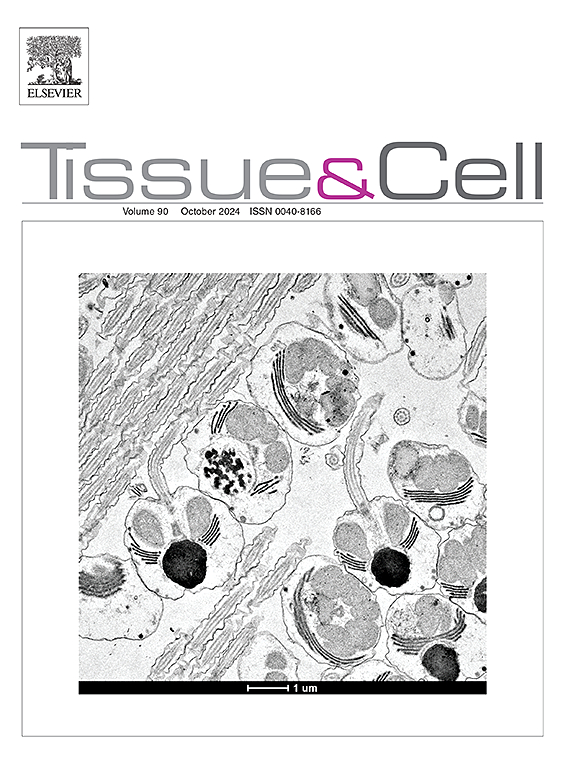Pretreatment of stem cells from human exfoliated deciduous teeth with low dosage of chrysin induces autophagy and cell survival as a target in regenerative therapy
IF 2.7
4区 生物学
Q1 ANATOMY & MORPHOLOGY
引用次数: 0
Abstract
Background
Stem cell-based therapies, particularly stem cells from human exfoliated deciduous teeth (SHED), are gaining attention for regenerative medicine. Autophagy plays a crucial role in stem cell function by maintaining cellular homeostasis. Understanding how agents like chrysin induce autophagy in SHED cells could improve stem cell maintenance, enhance functionality, and delay aging, thus offering new therapeutic avenues for stem cell-based regenerative treatments.
Methods
Flow cytometry as well as multi-lineage differentiation was performed to characterization of SHED cells. The MTT assay was conducted to determine the optimal concentration of chrysin. The expression of autophagy-related proteins, including LC3-II, p62, and Beclin-1, was analyzed using western blotting. To evaluate cell survival and regenerative capacity, the expression of TERT protein was examined. We further assessed the formation of autophagic vesicles using flow cytometry.
Results
SHED cells were positive for CD44 and CD73, while negative for CD31 and CD34. Differentiation assays demonstrate the ability of SHED cells to differentiate into osteoblasts and adipocytes. The MTT indicate an optimal concentration of 20 μM chrysin, potentially showing enhanced cell proliferation. Western blot analysis revealed increased expression of LC3-II and Beclin-1, as autophagy-related protein following chrysin treatment, while a significant decrease was observed in the level of p62 (****P < 0.0001). TERT levels showed a slight decrease in treated group. Chrysin significantly increased the autophagic vesicles, as evidenced by thr percentage of MDC-positive cells (**P < 0.001). Chrysin also induced slight apoptosis in SHED cells(*P < 0.05).
Conclusion
Together, these findings demonstrate that chrysin induces autophagy in SHED cells, suggesting its potential as a modulator of stem cell function.
求助全文
约1分钟内获得全文
求助全文
来源期刊

Tissue & cell
医学-解剖学与形态学
CiteScore
3.90
自引率
0.00%
发文量
234
期刊介绍:
Tissue and Cell is devoted to original research on the organization of cells, subcellular and extracellular components at all levels, including the grouping and interrelations of cells in tissues and organs. The journal encourages submission of ultrastructural studies that provide novel insights into structure, function and physiology of cells and tissues, in health and disease. Bioengineering and stem cells studies focused on the description of morphological and/or histological data are also welcomed.
Studies investigating the effect of compounds and/or substances on structure of cells and tissues are generally outside the scope of this journal. For consideration, studies should contain a clear rationale on the use of (a) given substance(s), have a compelling morphological and structural focus and present novel incremental findings from previous literature.
 求助内容:
求助内容: 应助结果提醒方式:
应助结果提醒方式:


